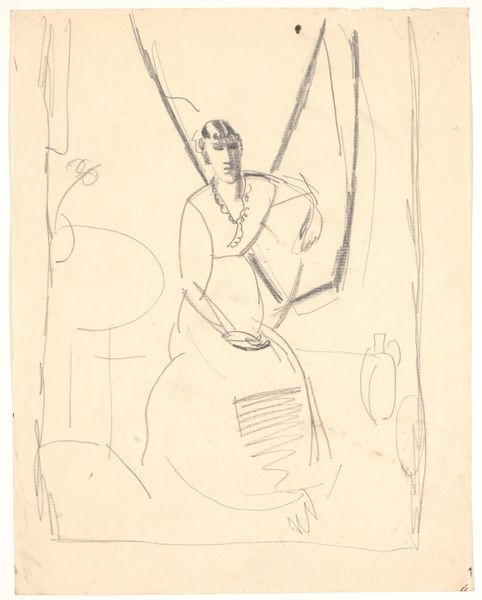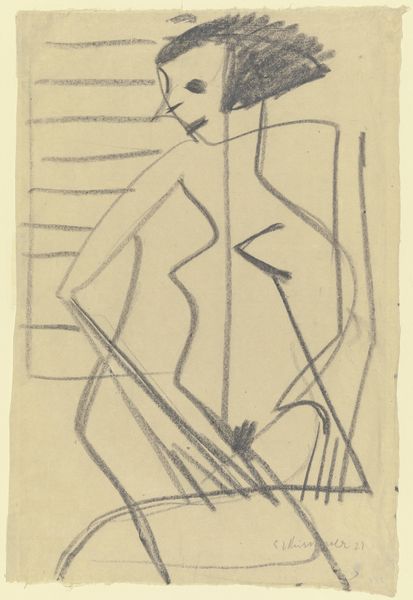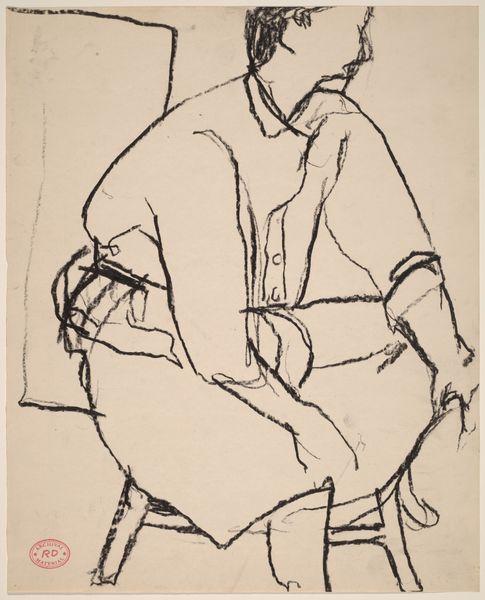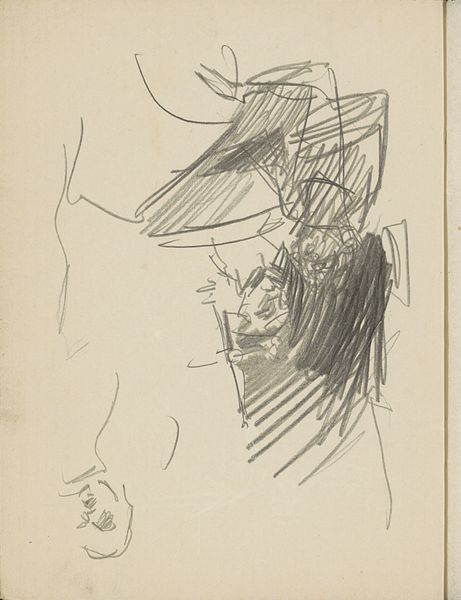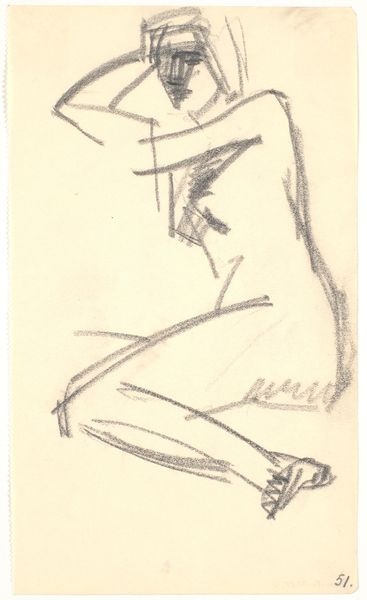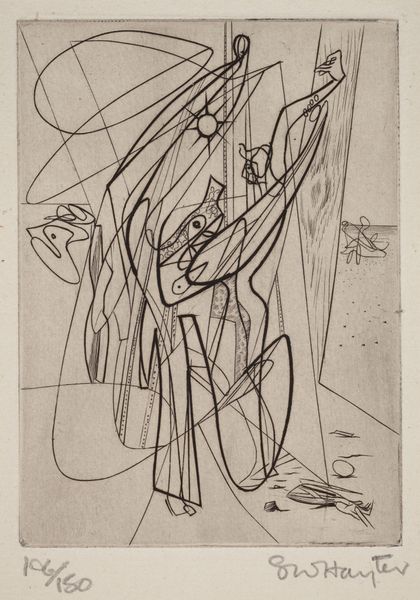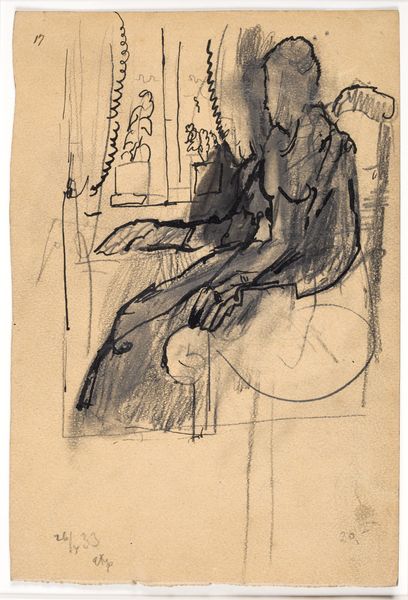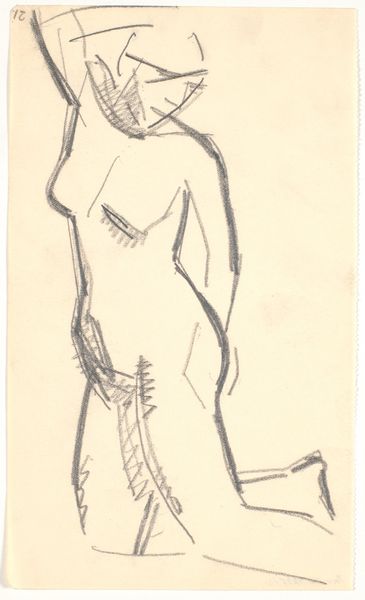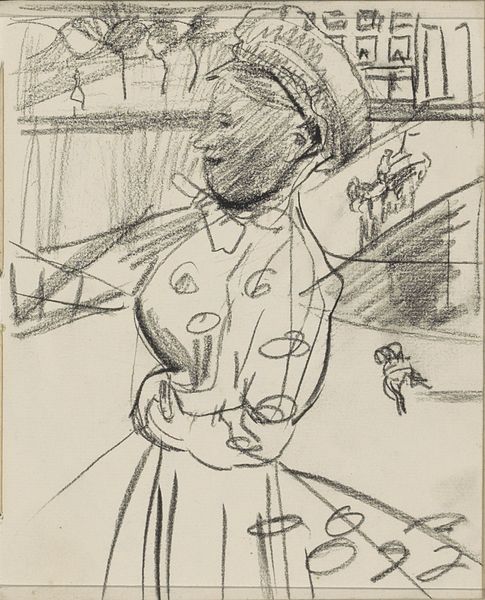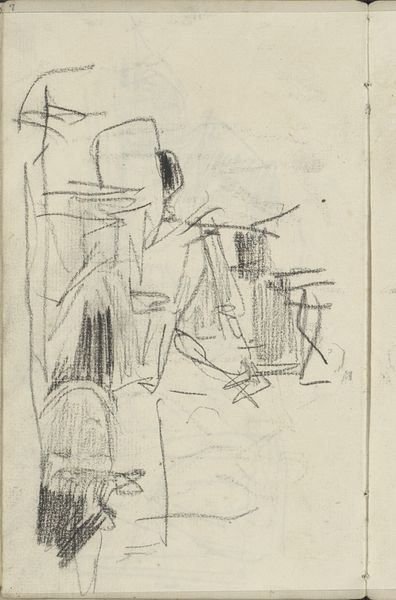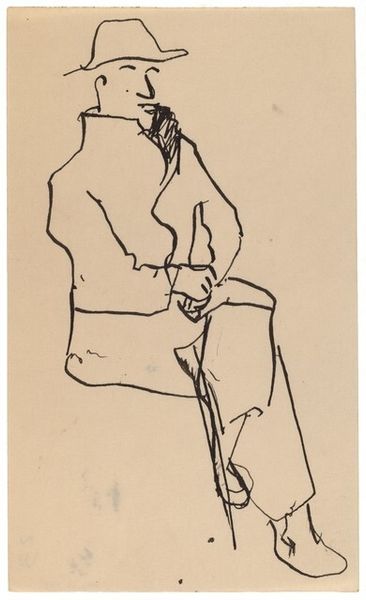
drawing, pencil
#
portrait
#
drawing
#
figuration
#
personal sketchbook
#
pencil
#
expressionism
#
sketchbook drawing
#
sketchbook art
Dimensions: 260 mm (height) x 169 mm (width) (bladmaal)
Editor: So, here we have Karl Isakson’s “Siddende dame,” a pencil drawing from around 1916-1919. It’s intriguing—the figure feels almost trapped within the strong rectangular border, giving it a somber mood. What symbolic elements jump out to you? Curator: That enclosure you notice is quite apt. It’s not merely a border but a frame, acting as a psychological barrier. Look at how the figure is rendered—blocky, almost architectural. The hat, or head covering, feels less like adornment and more like a kind of visor or even blinders. What memories might these symbols evoke? Think of the societal role of women during this period... Editor: Hmm, are you suggesting that the frame and blocky figure represent societal constraints placed on women? And the head covering symbolizes…limited perspective? Curator: Potentially, yes, but it's more nuanced than that. Consider the lines within the frame, especially those circles. They create a sense of unrest, internal turmoil, perhaps? This contrasts with the seemingly stoic posture of the "dame". It reminds me of conflicting emotions bubbling beneath the surface. What psychological state might the artist be trying to convey? Editor: Maybe a sense of restrained anxiety? Like there’s so much going on internally that isn't visible in the face... I didn’t notice all of this complexity at first! Curator: Indeed. And how does this all connect with the cultural memory of the time? Isakson was working during a period of great upheaval; the First World War, changing social roles. All these factors likely informed his visual language, imbuing the image with a psychological weight that transcends a simple portrait. Editor: I see what you mean. Thinking about the time period definitely shifts my understanding. This isn't just a woman sitting; it's a symbol of repressed feelings and societal pressures, mirrored by those forceful lines and geometric shapes. Curator: Precisely! By recognizing these symbolic layers, we can unlock a deeper understanding of not just the artwork, but also the artist's psyche and the era itself. Editor: Well, I will definitely look at portraiture differently from now on. Thanks!
Comments
No comments
Be the first to comment and join the conversation on the ultimate creative platform.
